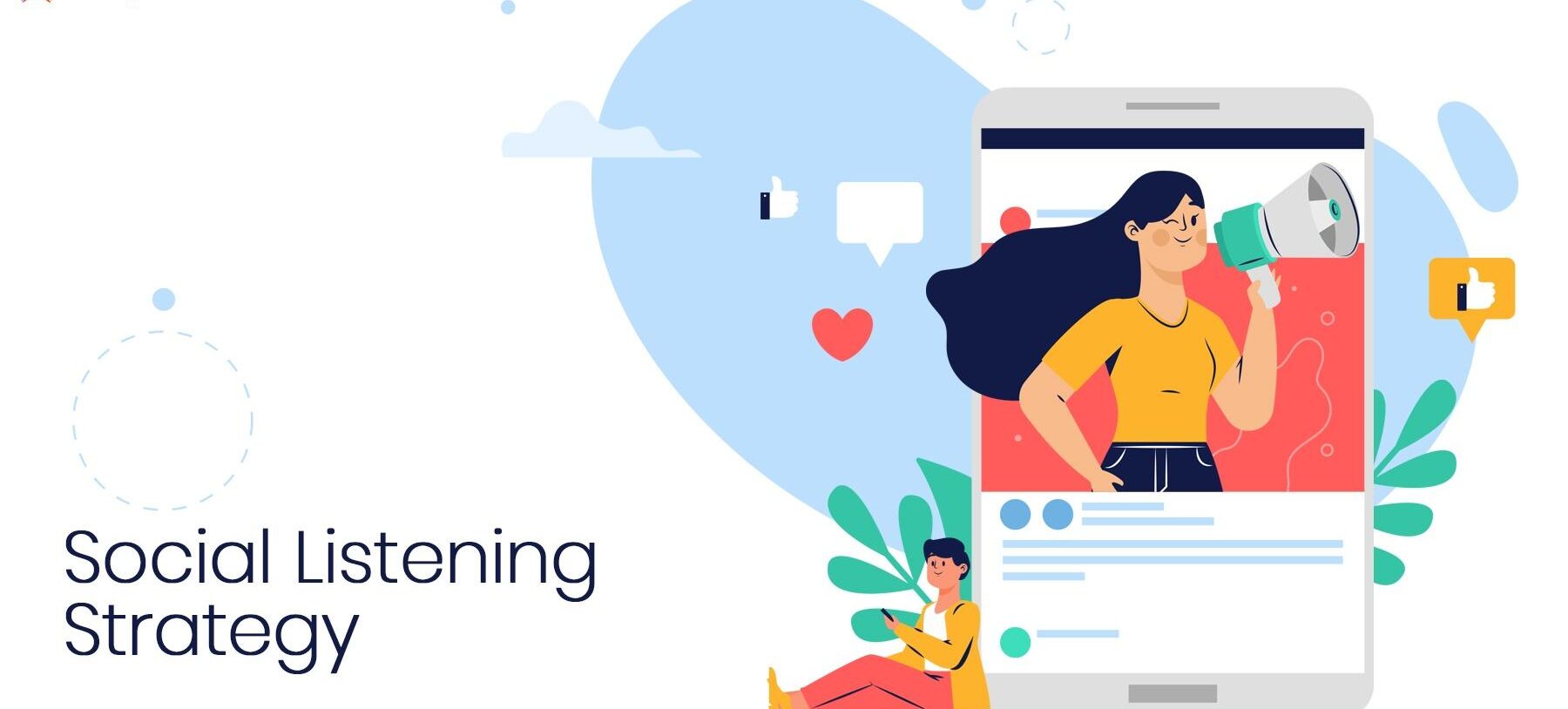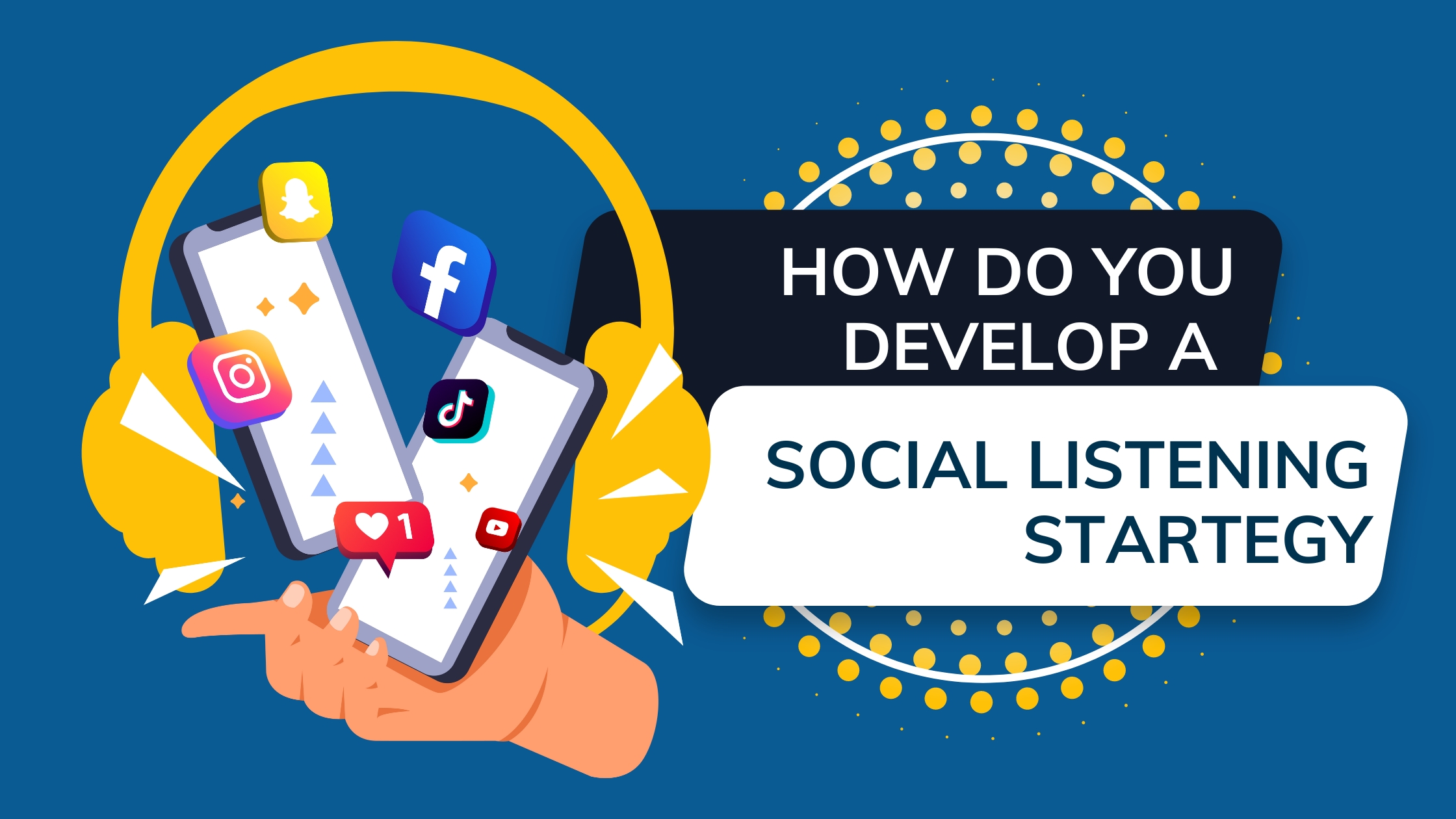In the fast-paced digital era, businesses and brands are constantly seeking effective ways to stay ahead of their competitors and better connect with their target audience. One powerful method that has gained significant popularity is social listening. This article explores the concept of social listening strategy and how it can be utilized as an essential component of your marketing strategy to boost your online presence and customer engagement.
Social Listening Strategy: Unveiling Insights to Elevate Your Business Strategy

What is Social Listening?
Social listening, also known as social media monitoring, is the process of tracking and analyzing online conversations and interactions related to a particular brand, product, industry, or topic. It involves monitoring various social media platforms, forums, blogs, and other online communities to gain valuable insights into how people perceive and discuss your brand or relevant subjects.
The Importance of Social Listening in Marketing
A robust social listening strategy is vital for businesses and marketers to gain a deeper understanding of their audience, industry trends, and competitor activities. By actively listening to online conversations, brands can identify opportunities for engagement, mitigate potential crises, and make data-driven decisions to enhance their overall marketing efforts.
Setting Up Your Social Listening Strategy
1. Defining Objectives and Goals
Before embarking on your social listening journey, outline clear objectives and goals. Determine what you wish to achieve through social listening, such as improving customer satisfaction, identifying emerging trends, or enhancing brand reputation.
2. Selecting the Right Social Media Platforms
Not all social media platforms are created equal, and different platforms cater to various demographics. Select the platforms most relevant to your target audience to focus your social listening efforts effectively.
3. Choosing the Best Social Listening Tools
Numerous social listening tools are available, each offering unique features and capabilities. Research and choose the tool that aligns with your requirements and budget, ensuring it covers the platforms you plan to monitor.
4. Identifying Relevant Keywords and Hashtags
To capture relevant conversations, identify keywords and hashtags related to your brand, industry, or niche. These keywords will act as triggers for your social listening tools to collect and analyze pertinent data.
Monitoring Brand Mentions and Sentiment Analysis
Social listening involves monitoring brand mentions across various platforms and performing sentiment analysis. Analyzing sentiment allows you to gauge how people feel about your brand and identify areas for improvement.
1. Responding to Positive Mentions
Acknowledge positive brand mentions promptly and express gratitude. Engaging with satisfied customers can further strengthen brand loyalty and encourage word-of-mouth marketing.
2. Addressing Negative Feedback
In the face of negative feedback, respond with empathy and a willingness to resolve the issue. Turning a negative experience into a positive one can have a profound impact on a customer’s perception of your brand.
Leveraging Social Listening for Competitor Analysis
Social listening provides valuable insights into your competitors’ strategies and performance.
1. Analyzing Competitor Performance
Observe how your competitors engage with their audience, the type of content they publish, and their overall sentiment. Use these insights to refine your marketing approach and stay ahead of the competition.
2. Identifying Industry Trends
Social listening allows you to identify emerging industry trends and topics of interest. Capitalize on these trends to create timely and relevant content that resonates with your audience.
Using Social Listening to Improve Content Strategy
Understanding what content your audience prefers is essential for a successful content marketing strategy.
1. Understanding Content Preferences
Analyze the type of content that receives the most engagement and positive feedback. Tailor your content strategy to align with your audience’s preferences.
2. Creating Relevant and Engaging Content
Utilize social listening data to craft content that addresses your audience’s pain points and interests. By doing so, you can attract and retain a more engaged and loyal following.
Social Listening for Customer Service Enhancement
Social listening can significantly improve your customer service efforts.
1. Providing Real-time Support
Respond promptly to customer queries and complaints on social media. By providing real-time support, you demonstrate your commitment to customer satisfaction.
2. Personalizing Customer Interactions
Use the information gathered from social listening to personalize customer interactions. Tailoring your approach to individual preferences enhances the overall customer experience.
Measuring the Effectiveness of Your Social Listening Strategy
1. Key Performance Indicators (KPIs)
Determine relevant KPIs to measure the success of your social listening efforts. These may include engagement rates, sentiment scores, and customer satisfaction levels.
2. Analyzing Data and Making Informed Decisions
Regularly analyze the data collected through social listening. Use the insights to make data-driven decisions that optimize your marketing strategies.
Integrating Social Listening with Other Marketing Efforts
1. Combining Social Listening with SEO
Integrate social listening data with your search engine optimization (SEO) strategy. This collaboration can lead to better-targeted content and improved search rankings.
2. Integrating Social Listening with Email Marketing
Tailor your email marketing campaigns based on the preferences and interests of your audience as identified through social listening. This personalization can lead to higher open and click-through rates.
Staying Ethical in Social Listening Practices
1. Respecting User Privacy
Always prioritize user privacy and comply with relevant data protection regulations. Obtain consent before tracking and analyzing users’ social media interactions.
2. Maintaining Transparency
Be transparent about your social listening practices and inform your audience that you are monitoring online conversations. Building trust is essential for fostering positive relationships with your customers.
Conclusion
In conclusion, social listening is a powerful tool that can revolutionize your marketing strategy. By actively monitoring and analyzing online conversations, you gain valuable insights into your audience’s preferences, competitor activities, and industry trends. This newfound knowledge empowers you to create more relevant and engaging content, enhance customer service efforts, and make data-driven decisions. Embrace social listening as an indispensable element of your marketing arsenal to build a strong online presence, foster customer loyalty, and outshine your competitors.
Ready to supercharge your marketing strategy with social listening? Request a demo from AIM Technologies today!
FAQs
What is social listening?
- Social listening is the process of monitoring and analyzing online conversations and interactions related to a brand, product, industry, or topic.
Why is social listening important in marketing?
- Social listening helps businesses gain insights into their audience, competitors, and industry trends, enabling better marketing decisions.
How can social listening be used for competitor analysis?
- Social listening allows you to analyze your competitors’ strategies, content, and customer sentiment, aiding in refining your marketing approach.
What role does social listening play in content strategy?
- Social listening data helps tailor content to meet the audience’s preferences, increasing engagement and brand loyalty.
How can social listening improve customer service?
- By promptly responding to customer inquiries and personalizing interactions, social listening enhances customer service efforts.



